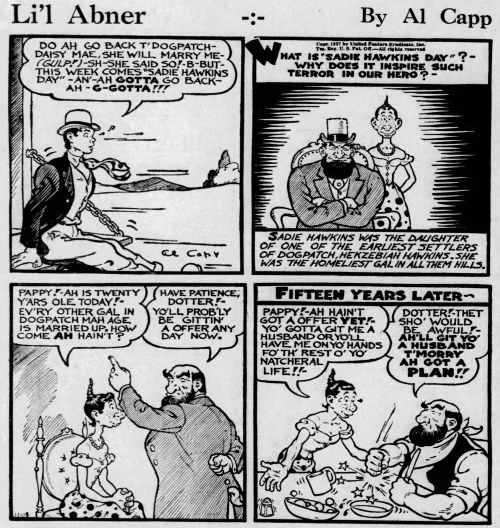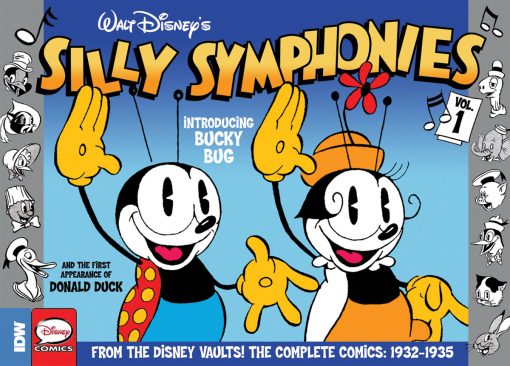Wayback Whensday – Bucky Bug, Air Hawk, Sadie Hawkins, and Steve Bentley (et. al.)
Skip to commentsThe origin of National Sadie Hawkins Day: How a comic strip that saw a man desperate to marry off his ‘ugly’ daughter encouraged a generation of women to ‘chase’ men down for a date.


© Al Capp Enterprises/UFS
Sadie Hawkins Day is celebrated the first Saturday of November in parts of the US inspired by a fun storyline in the comic strip Li’l Abner, published by Al Capp on November 15, 1937.
The comic strip was a success, and by 1938, college students began holding annual Sadie Hawkins dances. The dances buck the normal trends and see women ask men to attend the gatherings. They have since spilled over to high schools and other groups.
Emma Saletta for The Daily Mail relates the origin and history behind Sadie Hawkins Day.
The storyline made women feel empowered to challenge gender roles.
**********
“Air Hawk” is the name of an Australian newspaper adventure strip that ran for many years. Air Hawk is the name of an air charter service based in Alice Springs, operated by pilot Jim Hawk. In addition to operating this enterprise, Jim supplies an Emergency Relief Unit to assist any Royal Flying Doctor Service base in need during times of special emergency. “Air Hawk” is the name of an Australian newspaper adventure strip that ran for many years. Air Hawk is the name of an air charter service based in Alice Springs, operated by pilot Jim Hawk. In addition to operating this enterprise, Jim supplies an Emergency Relief Unit to assist any Royal Flying Doctor Service base in need during times of special emergency.
The Sunday adventures began in 1959 and appeared weekly until 1980. The daily stories commenced in 1963, finishing in 1986 when artist-writer-creator John Dixon (1929-2015) decided to leave Australia to begin magazine work in the United States of America.

Nat Karmichael has opened a kickstarter to fund a series collecting the complete Air Hawk daily comic strips. In the course of the solicitation Nat gives a brief history of the comic strip and profile of the creator John Dixon.
**********
Disney’s Silly Symphonies comic strip of the 1930s would not be my go-to place for veiled references to weapons of mass destruction, hobo philosophy, trench warfare or impoverished ghettoes. Much to my surprise, the first year of this brand extension of the studio’s hit animated short series included all of those dark themes and more.


Steve Smith at Panels and Prose takes a look Disney’s Depression “Funnies.”
But [Earl] Duvall also had an edge to his imagination. The strip began in early 1932 with familiar children’s lit conventions, as the studio deliberately pitched this newspaper version to a younger demo than the all-ages movie audience … But apparently the crushing reality of the Great Depression soon finds its way even into fairy tale bugdom. Bucky happens upon a bug hobo …

The early Silly Symphonies have been collected between hardcovers.
**********
The Complete Steve Bentley by Stanley Ford.
Published weekly from Monday to Friday for two and a half weeks, from Wednesday February 27, 1964 to Friday March 13, 1964, for a total of 12 strips.

Outis Fumetti re-presents the Alex Toth advertising promo comic strips for the 1965 comedy How to Murder Your Wife. Some background here.


Comments 4
Comments are closed.